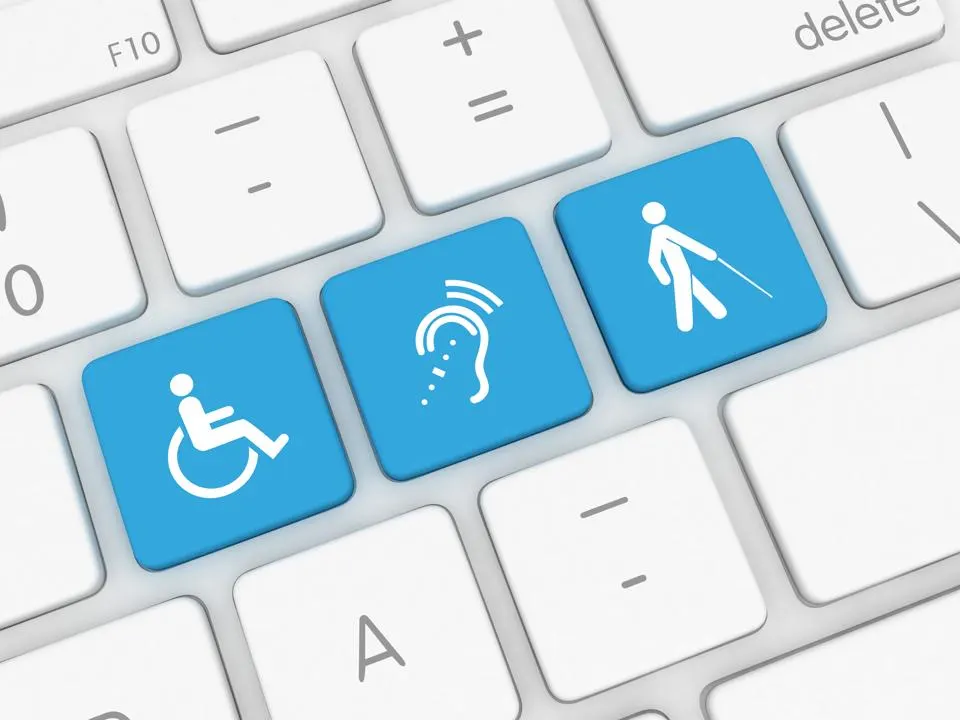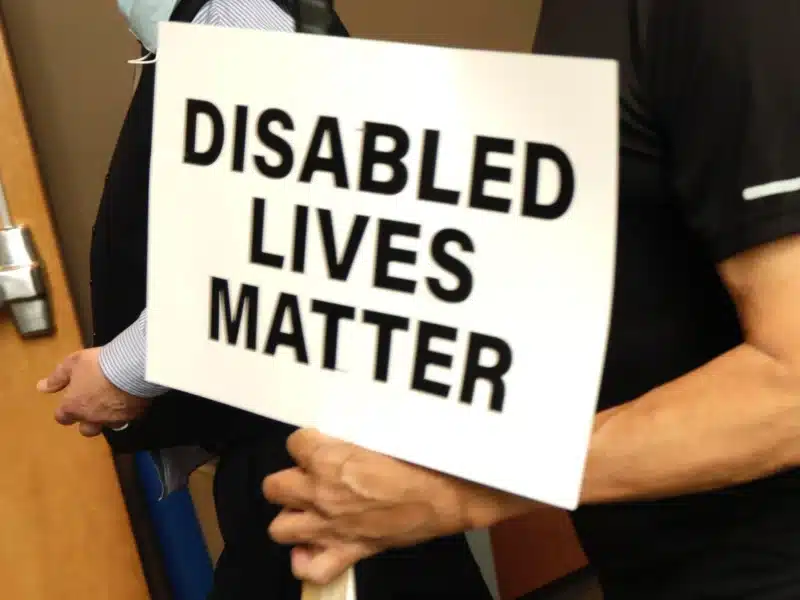
A quiet revolution is unfolding for disabled women on social media. Their voices — once marginalized and underrepresented — are finding new power and purpose. For disabled women, social media platforms are more than the latest technological fad; they're beacons of empowerment and community in a society that often overlooks them. These spaces aren't just about connection - they're arenas of advocacy, empowerment, and solidarity, representing a new kind of social value.
Navigating this online realm offers a wealth of experience for disabled women, balancing empowerment with feeling safe and seen. While traditional media landscapes have long been barren for the diverse narratives of disabled people (especially women) social media has emerged as a fertile ground for their stories. Thanks to this new landscape, they’re now storytellers, advocates, and trailblazers, shaping their narratives one post at a time. And social media platforms swiftly amplify their voices - allowing them to champion their rights and share their experiences on their own terms, by dismantling walls of isolation and forging new bonds.
An investigation by the global non-profit Educational Development Center finds that: “One of the strengths of social media is that it allows people with similar experiences to find each other and form a community, regardless of geography.” For disabled women using social media platforms, this rings true — they’re a lifeline to a world where understanding and acceptance are sometimes easier to reach online than in the often hostile physical spaces outside our doors.
Sarah Hill’s 2023 study of disabled women’s presentation practices online captures this shift: “Social media is attributed with the capacity to provide disabled young women with visibility that they mostly lack within traditional media.” This visibility is more than a mere showcase; it's a powerful tool for advocacy, and a welcome canvas for self-expression.
Consider, for example, a hypothetical journey of a disabled woman on Instagram; each post she shares is a brushstroke in a larger portrait, challenging stereotypes and inviting the world into her reality. Her story isn't just seen, it's felt — offering a window into a life rich with complexity and resilience. Social media platforms provide disabled women with a unique opportunity to dismantle misconceptions about disability, replacing them with stories woven from personal experience and truth, and offering a more nuanced, personal, and authentic glimpse into their lives.
New breeds of technology also emerge as revolutionary forces. The transformative impact of devices like smartphones in bridging the accessibility divide is wide, as underscored by a UNICEF accessibility report: “Smartphones … can be used as assistive products to help a person with a disability perform a specific task.” This demonstrates how, in a landscape often marred by ableist obstacles, assistive technologies act as bridges, spanning chasms of exclusion and opening pathways to engagement and empowerment.
Of course, as the internet’s influence grows, so do concerns about our well-being becoming entangled with issues like screen addiction, and the inevitable spread of unrealistic body image ideals. A systematic review of social media and adolescents by Cureus points out: “Humans are naturally social species...a lack of social connection can pose major threats to one's mental health.” This sheds some light on how anybody can fall prey to the lure of wanting to feel part of a group, even if the group turns out to not be entirely good for you, and there’s no question that some of the pressures and anxieties engendered by social media reflect a broader trend - one where the quest for connection and validation can sometimes lead down a darker path.
The pervasive threat of cyberbullying casts a long shadow, magnified by the internet’s sprawling reach and the veil of anonymity it often provides. An observation from one Lecture Notes in Education Psychology and Public Media study focused on social media and depression brings this issue to light: “The omnipresence of digital platforms brings both advantages and risks, exemplified by the emergence of cyberbullying.” This statement isn't just an academic analysis; it's a clarion call to acknowledge and address a growing technological menace.
The prevalence of online harassment on social media is a harsh reality, especially for disabled women. It underscores an urgent need for the creation of digital spaces that are not just accessible but also nurturing - where safety and support are not optional but fundamental. The scars of cyberbullying run deep, leaving imprints on the psyche that can be as damaging as physical wounds.
Ensuring that digital platforms are truly empowering for disabled women requires a commitment to design that embraces every user. The UNICEF report captures the essential truth that, “An effective inclusive design process will deliver a product with an accessible design.”
The magic of inclusive design lies in its details – clear layouts that guide the eye, logical order that makes navigation intuitive, and easy-to-read texts that welcome rather than exclude. But these aren't simple aesthetic choices- as social media platforms continue to morph and expand, the importance of these inclusive design principles represent a vital truth and a crucial call to action: that every user matters, and every experience is valuable. It’s time for the world to recognize and harness the potential of social media as a tool of empowerment for disabled women, ensuring that these platforms are accessible and equitable.
There is little room for doubt that In the rich tapestry of our online lives, the threads of personal stories weave a narrative more compelling than any theory. The experiences of Serena Olsen and Jessica Tambor, and another activist who wishes to remain anonymous, offer a range of illuminating perspectives, each highlighting the complex relationship between disability and digital life. Let’s take a look at their stories.
A Path of Connection and Culinary Discovery
For Serena Olsen, social media was a gateway to the blind community, blossoming into a platform for both personal and professional metamorphosis. “Fast forward to today, and my algorithms for Facebook and LinkedIn seem to only suggest I connect with other blind people,” she remarks, illustrating social media's power to forge focused communities. Serena's culinary ambitions found fertile ground on these platforms: “It was where I'd establish my new identity as a professional food nerd while I navigated the very complicated matter of actually switching jobs.” Her foray into a Facebook Live event, despite initial fears, became a testament to her resilience: “Everything that could have gone wrong pretty much did... I managed to laugh my way through the whole thing.”
A Beacon of Advocacy and Community Ties
Jessica Tambor's story underscores social media's role in advocacy and connection. Living with a physical disability, she finds social media platforms vital for gaining broader perspectives: “It helps me see how other people with disabilities live who I would not know otherwise.” Her involvement in Facebook groups like tracheostomy and gaming communities highlights the importance of these digital support networks. Jessica also candidly shares the creative challenges posed by her disability in creating videos on TikTok finding ways to adapt her content: “I make TikToks that are easy for me to do and only show myself once in a while.”
Striking a Delicate Balance Online
An anonymous activist who navigates life with congenital cerebral palsy (CP) and other diagnoses, embodies a thoughtful approach to social media engagement. “I prioritize having a life beyond social media,” she declares, valuing a balanced digital existence. Her targeted use of platforms like Substack to engage with disability-focused content, following voices like Andrew Pulrang and Alice Wong, showcases a discerning digital presence. While she recognizes social media's role in activism, she remains cautious of its darker aspects: “I'm averse to and disinclined to engage in platforms where incivility, vitriol, and hate crimes get virally spread unchecked.”
These stories show us how the landscape of social media is on the cusp of a transformative evolution, with technologies like VR and AI poised to redefine our everyday interactions once more.
And so the future of social media, particularly for disabled women, hinges on a forward-thinking and inclusive approach. It's about crafting internet spaces where empowerment isn't an afterthought but a foundational principle. To achieve this, the involvement of disabled women is not just beneficial; it's essential. Their insights and experiences are the compass that can guide us in shaping an online world that is safe, inclusive, and responsive to their needs, spanning both established platforms and those yet to emerge.
This path forward for social media is a reflection of the broader narrative in disability history - a relentless pursuit of a world unmarred by prejudice and limitation. It's a vision of a future where inclusivity isn't just a goal but a reality of daily existence. The path to a more inclusive and equitable online future is not just a possibility; it's an imperative - one that all disabled women can share and benefit from.
About the Author: Alejandra Ospina is a fellow with The Loreen Arbus Accessibility is Fundamental Program, a fellowship created with Women’s eNews to train women with disabilities as professional journalists so that they may write, research and report on the most crucial issues impacting the disabilities community.


